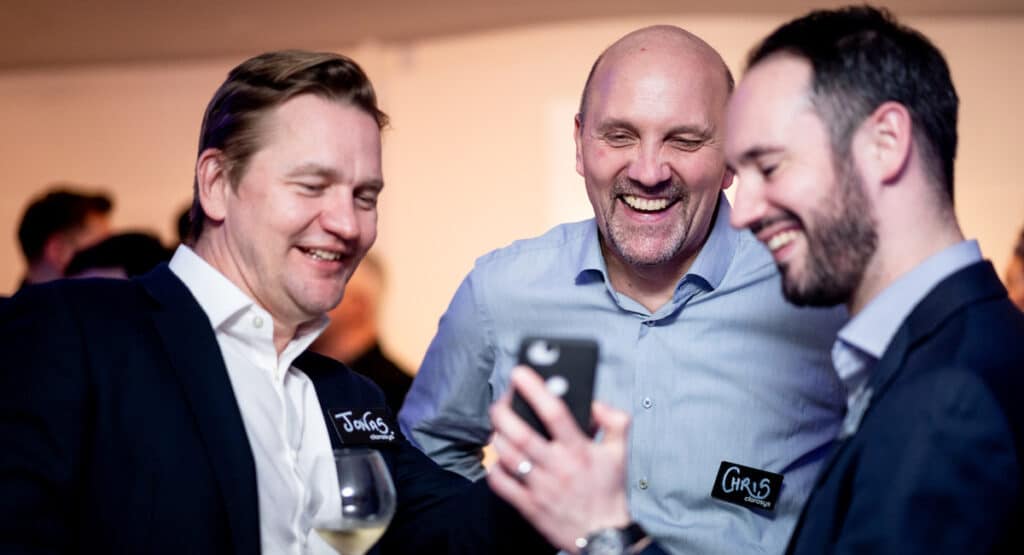We all know how important it is to have a clear company-wide vision in place and for everything underneath to be working towards achieving that aim.
Why is it important to align EX and CX strategy to your company vision, mission and values?
Why is it important to align EX and CX strategy to your company vision, mission and values?
We all know how important it is to have a clear company-wide vision in place and for everything underneath to be working towards achieving that aim.

We all know how important it is to have a clear company-wide vision in place and for everything underneath to be working towards achieving that aim. Ensuring your employee experience and your customer experience align to that vision is no different.
The pursuit of standout EX
When EX is given to the HR team to implement, imaginative wellbeing initiatives are often introduced and there is a focus on traditional people-enabling processes from hire to retire.
But good EX does not stop there.
Standout EX helps people feel great about their career. It gives them the right tools, environment, processes and support to flourish. By doing so it enables people to do the best job possible in service of the company’s vision and to deliver a great customer experience.
Every company has its own vision and a unique set of goals that are true to the organisation’s values. Therefore, every EX strategy will be unique and offer different benefits. But, at the heart of every plan should be a commitment to giving people a sense of purpose.
This sense of purpose binds people to their work and they are happy to invest time and energy in pursuing the company’s vision.
Great EX leads to greater CX
EX builds trust, loyalty, and an ambition to deliver amazing CX. Ask yourself what causes a grumpy front desk attendant or waiter to make your experience miserable. How do you think they feel about their employer? Consider the best customer experience you’ve ever had. Perhaps it was the extra care they took to explain something to you, the empathy they displayed when you needed help, the smile they gave you, or they addressed you by name because you were a loyal customer. They did it because they were good at their job, but also because the firm they represented really mattered to them. They believed they were part of something big.
Gimmicks won’t improve EX
EX is not a one-off programme and, for most organisations, Google-style offices with slides and a dog aren’t the solution.
We’ve all seen plenty of companies that have created eye-catching posters which scream buzzwords in a bid to drum up employee appetite for the road ahead. But do they mean anything, and more to the point, do they do any good?
Driving EX requires leadership, belief, and a strong culture that is aligned with the vision. Ultimately, leaders of an organisation need to act as role models. If they don’t, a gap is created between what is said and what is actually done. This leads to an erosion in trust. In the end, stalled EX programmes reduce confidence and people vote with their feet.
Every EX is unique
Here at Clarasys, our employee experience has won us a few awards. But our strategy will not suit every organisation. For example, we distribute decision making so that our people are empowered, acting more like owners. This leads to purpose-driven employees and, we believe, a more personal relationship with clients. But this model is likely unsuitable in an organisation with operational frontline staff who have steady workload demands. In this environment, staff feel more able to do a great job for their customers when they are given clear instructions and direction.
So, when we start looking at why we need to improve EX, we also need to look at the overall company vision and corporate strategy.
CX strategy and crossover areas
In the same vein as EX, a good CX strategy is one that has been directed by the overall vision and corporate strategy. This will determine which customer segmentation the CX strategy really needs to focus on. In other words, there’s no need to boil the ocean.
Any useful strategy should explain what is needed to get to the destination. And this is where it’s really important to consider your CX and EX strategies together.
Solid service design for both strategies is key and there will be crossover for sure. For example, the moment of onboarding both a new employee or a new customer is such a crucial moment in securing loyalty and excitement in the company. It’s an opportunity to design a white-glove experience for both. A top-rated CX is not going to involve simply sending across the contract for a customer to sign. Therefore, why would it be good enough for an employee?
When I bought my first house, the lender sent me a welcome hamper on the day I picked up the keys. It was such a nice touch. But I wonder if that company did the same to welcome a new member of staff. Imagine if they did. What a statement!
The obvious area for crossover is the utilisation of technology. Why only consider chatbots for your online customers? Couldn’t that also become a lifesaver for employees struggling to find help internally? And then consider that most customer self-service portals are basically just a front end into the organisation’s back-office systems. Transforming the customer’s self-service experience is a fantastic opportunity to also roll out UX improvements for your employees.
The importance of stress testing
Great CX and EX are as much about being able to handle the challenging moments as well as the sunny days. When building both strategies, consider which scenarios are likely to challenge the robustness of your EX/CX and make sure you test them out. This way you will spot areas that will become differentiators for you.
In summary
Being clear on your company’s overall vision allows you to focus on what great CX and EX should look like. But don’t do these in silo. If you do them in parallel with one another, you’ll be surprised at how much value you get.
For the previous blog post in our EX in CX series, read ‘How does building quality employee experiences (EX) improve CX?’
This post was originally written by: Oli Rodi

